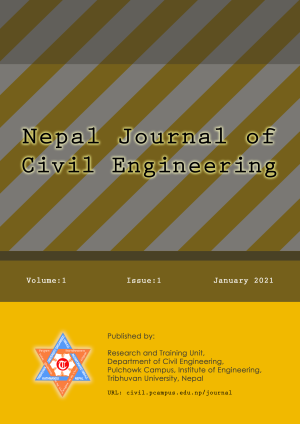Factors Influencing Sand Re-liquefaction in Shaking Table Test
DOI:
https://doi.org/10.3126/njce.v1i1.43373Keywords:
RE-liquefaction, Shake table, EPWP, Liquefaction resistance, PGAAbstract
Cases of historical earthquakes show that liquefied sand deposits may undergo re-liquefaction yet again by a succeeding earthquake. However various factors such as the depth of sand deposits, peak ground acceleration, and shaking duration of an earthquake can affect the re-liquefaction occurrence. To understand this underlying mechanism, a series of shaking table experiments were performed by varying the depth of sand model, peak ground acceleration, and shaking duration of input motion. The excess pore water pressure and the acceleration response of the sandy model in the process of re-liquefaction in the sand were measured. The test result demonstrated that during a subsequent re-liquefaction, shear wave propagation mechanism and the number of times sand re-liquefy varies with the depth of sand model suggesting that the re-liquefaction resistance is depth-dependent, and the soil layer near the surface is most likely to be liquefied. The analysis by varying peak ground acceleration and shaking duration of input motion indicated that the model subjected to shorter duration and higher peak ground acceleration of input motion have a greater tendency to re-liquefy in multiple number of shaking, signifying that the conventional strategy for liquefaction resistance needs to be improved before it can be implemented for the analysis of site liquefaction. Based on the findings of parametric studies, there exists a critical liquefaction void ratio within a zone with which we can forecast the presence or absence of liquefaction in the future earthquakes.
Downloads
Downloads
Published
How to Cite
Issue
Section
License
All the materials published in the journal are freely accessible to all. Reproduction of the part or entire content is allowed only when written consent from the publisher is obtained. The original source should be cited in reproduction as well as copying.




